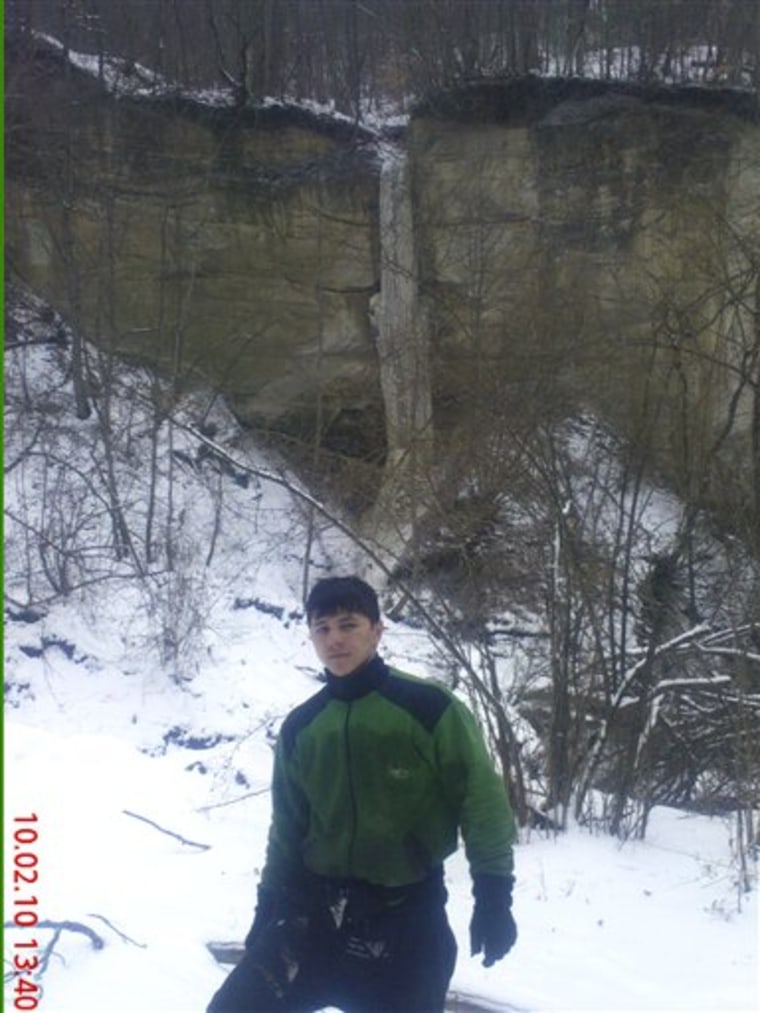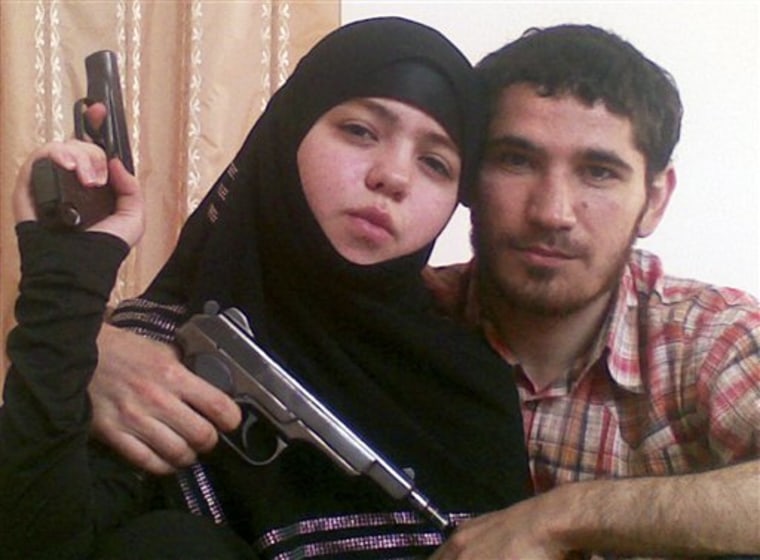The two mysterious young widows who brought terror to Moscow by targeting its famed subway system might have been motivated by a forest massacre in which garlic-picking villagers were slain by government forces.
Both suicide bombers — one 17, another reportedly 20 — were from Russia's predominantly Muslim North Caucasus region, home to a fierce Islamic insurgency that has been fueled by frequent killings, kidnappings and torture of residents by government forces.
Monday's subway bombings, which killed 40 people and injuring 90, were the first terror attacks in the Russian capital since 2004. Chechen rebel leader Doku Umarov claimed responsibility, saying the attacks were retaliation for the Feb. 11 killing of innocent civilians by government forces in the North Caucasus.
Then, four garlic pickers died along with 18 suspected Islamic militants in a three-day shootout in the mountainous forests that straddle two other North Caucasus provinces, Ingushetia and Chechnya.
The Memorial rights group on Saturday said the four were villagers caught in the crossfire and then dragged away and executed while gathering the wild shoots to sell at local markets.
"That shooting was just lunacy," said Alexander Cherkasov, a Memorial spokesman. "And that lunacy was used to justify terrorism."
Memorial provided two pictures Saturday of young men it said were killed in the forest massacre. One picture showed a handsome, fit 17-year-old Movsar Dakhayev in a green fleece jacket in the snowy woods a day before he was shot dead by government forces. Another photo, undated, showed 19-year-old Shamil Katayev lying on his back in the snow, with streaks of blood all over his face and head.
Umarov, in his video message Wednesday, called them "some of the poorest people" in the already impoverished region.
"These people were mercilessly destroyed," he said.
Violent storm
Dagestan in particular has been the epicenter of a week of violence. On Saturday, three militants there opened fire on police in a drive-by shooting, killing one and injuring another. Two other suicide bombers struck Wednesday near Dagestan's border with Chechnya, killing 12 people. Another explosion there Thursday killed two suspected militants.

Dagestan's Interior Ministry spokesman Vyacheslav Gadzhiyev told The Associated Press that Saturday's shooting occurred near the village of Chontaul, 40 miles northwest of the provincial capital of Makhachkala.
Russian officials were still pressing hard Saturday to learn more about the Moscow suicide bombers.
On Friday, a leading Russian newspaper published a photo showing a doe-eyed teenager, partly veiled, in the embrace of a bearded man — both grasping handguns. Federal investigators confirmed that a 17-year-old widow from Dagestan named Dzhanet Abdurakhmanova attacked the Park Kultury subway station near Moscow's famous Gorky Park.
Kommersant published what it said was a picture of Abdurakhmanova, also known as Abdullayeva, dressed in a black Muslim headscarf and holding a Makarov pistol. The newspaper indicated that she may have been out to avenge her husband, Umalat Magomedov, an Islamic militant killed by government forces in December.
Kommersant said the couple met in an Internet chat. Magomedov then set up a meeting and drove her away by force when she was still 16.
'Meeting in heaven'
After her husband's death, Abdurakhmanova may have fallen under the influence of Islamists, who try to persuade widows and close relatives that they need to sacrifice their lives to avenge their slain husbands, sons and brothers.
The daily Moskovsky Komsomolets said a burned shred of a letter in Arabic found on Abdurakhmanova's body promised a "meeting in Heaven." It was unclear who wrote the letter.
The other blast struck the Lubyanka station in central Moscow, beneath the headquarters of the Federal Security Service or FSB, the KGB's main successor agency, once led by Prime Minister Vladimir Putin himself.
Kommersant said the second subway bomber was tentatively identified as 20-year-old Markha Ustarkhanova from Chechnya, the widow of a militant leader killed last October while he was preparing to assassinate Chechen President Ramzan Kadyrov, who is backed by the Kremlin.
President Dmitry Medvedev urged even harsher measures Friday to crack down on terrorism, including targeting even people who do simple chores like washing clothes for the militants.
However, Russian police and security forces have long been accused of seizing people suspected of aiding militants. Some people have been tortured, and many have disappeared. And rights activists trying to document the abuses have also been killed, kidnapped or threatened.
